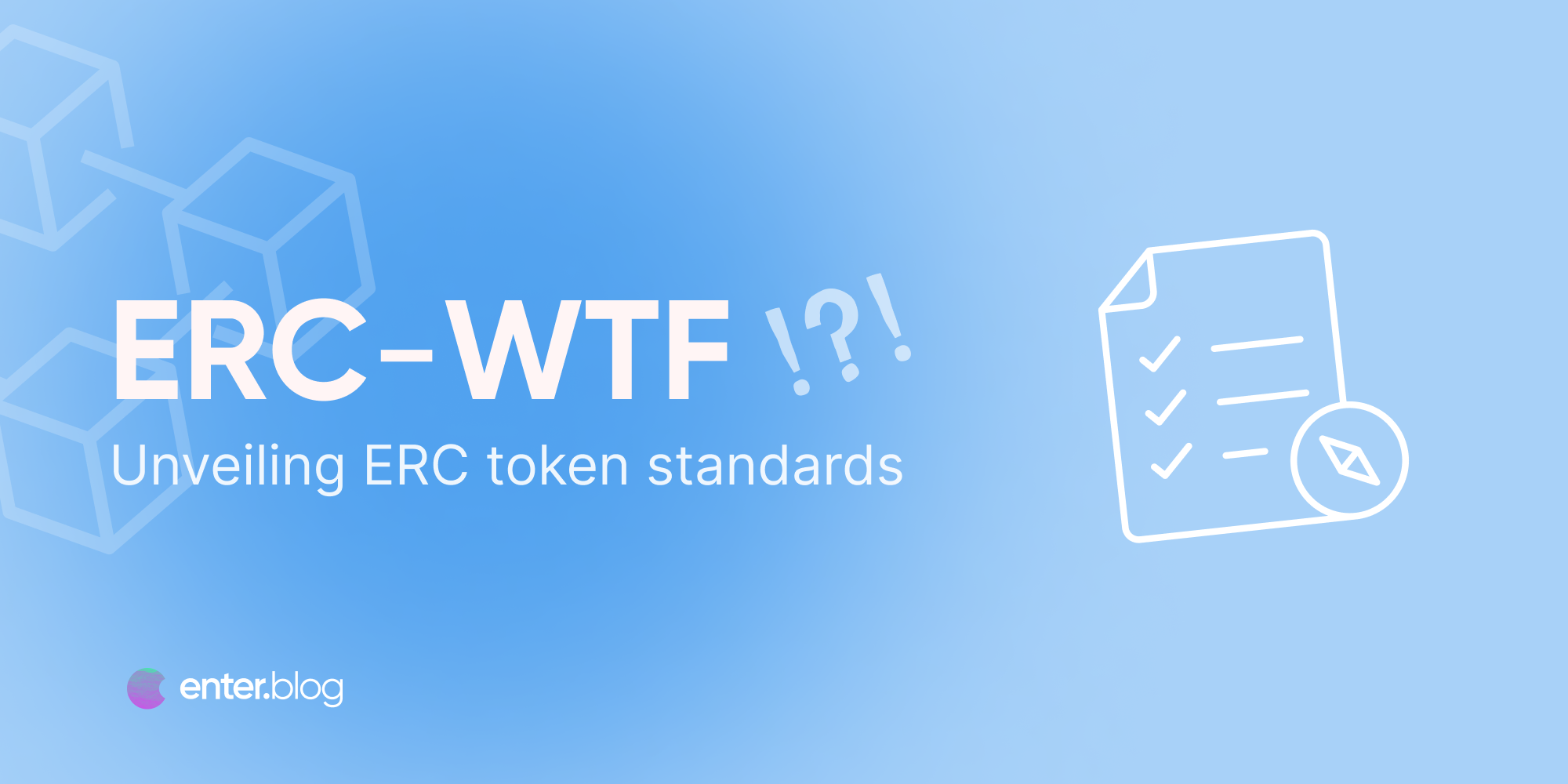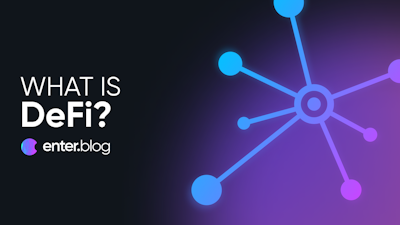
ERC-WTF: Unveiling ERC Token Standards
This article embarks on an in-depth exploration of the realm of ERC token standards, shedding light on their significance, diving into their intricate facets, and envisioning their potential integration beyond the confines of the Ethereum framework.

In blockchain technology, ERC token standards are the guiding principles that drive interoperability, efficiency, and innovation. Integral to the Ethereum ecosystem, these standards have fundamentally reshaped the landscape of token creation, management, and utilization. Their transformative influence is evidenced by the rapid expansion of decentralized applications (DApps) and the dynamic growth of decentralized finance (DeFi). At its most basic, we can understand a token standard as the rules and protocols a token must follow to be compatible with the Ethereum Mainnet and other EVM Chains.
Laying the Foundation: Deciphering ERC Token Standards
The concept of ERC token standards operates as an orchestrator of cohesion within the blockchain revolution. Nestled within the Ethereum ecosystem, these standards represent meticulously designed frameworks that establish the rules and interfaces governing the creation of tokens.
By introducing a standardized structure and fostering uniformity, ERC token standards streamline the development process, facilitating seamless interaction across tokens, DApps, wallets, and exchanges. This organized framework propels innovation and empowers developers to push the boundaries of possibility.
Unveiling the Dimensions of ERC Token Standards: A Comprehensive Exploration
ERC-20: This groundbreaking standard embodies the epitome of fungible tokens, and most of the crypto tokens we know and love (or love to hate) are ERC20 tokens. These tokens, characterized by their interchangeable nature, form the cornerstone of utility and exchangeability within the ecosystem.
From propelling the rise of stablecoins like USDC to underpinning the ascent of DeFi platforms fueled by tokens such as $COMP, ERC-20 tokens have redefined transactional dynamics and interactions within the world of blockchain applications. Other notable ERC-20 tokens include $AAVE, $USDT, and $SHIB.
ERC-721: Departing from the realm of fungibility, ERC-721 introduces the concept of non-fungible tokens (NFTs). Each NFT encapsulates a unique digital asset, marking a pivotal shift in digital ownership and creative expression.
The surge of the NFT revolution, bolstered by the prowess of ERC-721, has ushered in the era of digital art marketplaces, collectible platforms, and innovative gaming experiences. Notable milestones include the transformative impact of CryptoPunks and Beeple's groundbreaking $69 million NFT artwork sale.
ERC-1155: Spanning the spectrum between fungible and non-fungible tokens, ERC-1155 emerges as a versatile standard synonymous with efficiency and adaptability. By enabling the existence of multiple tokens within a single smart contract, this standard optimizes gas utilization, simplifies the intricacies of token management, and allows for multi-minting.
The gaming domain has harnessed the capabilities of ERC-1155 tokens, empowering gamers with tangible ownership of in-game assets transferable across diverse platforms.
ERC-777: Extending beyond the realm of ERC-20, ERC-777 introduces an elevated framework. This advanced standard integrates enhanced security mechanisms, token-specific operator permissions, and refined control over token transfers. Positioned as a solution catering to security tokens and applications necessitating intricate transactional attributes, ERC-777 broadens the horizons of tokenization and the exchange of value.
Most importantly, ERC-777 increases efficiency by allowing users to send tokens and notify a contract in one transaction. It also increases security by allowing contract owners to blacklist certain addresses from interacting with it - all while remaining backward compatible with ERC-20.
ERC-1337: Delving into the realm of experimentation, ERC-1337, aptly dubbed the "Anti-Fungible Token Standard," introduces an element of distinctiveness. By rendering tokens resistant to conventional exchange trading, ERC-1337 challenges prevailing norms and sparks conversations surrounding unexplored dimensions of token innovation.
ERC-4337: This standard introduces the concept of account abstraction, reshaping how transactions are executed on the Ethereum network. By merging externally owned accounts (EOAs) with contract accounts, ERC-4337 offers a flexible and customizable wallet system. It enables users to recover their accounts through trusted agents, facilitates sponsored transactions for dApps, enhances security in web gaming, and introduces multi-sig wallets, batch transactions, and gasless transactions. Despite some vulnerabilities and the need for user education, ERC-4337 holds the potential to revolutionize user interactions, fostering widespread adoption of blockchain technology. You can read more about ERC-4337 in this article.
Transcending Boundaries: ERC Token Standards Beyond Ecosystems
The impact of ERC token standards surpasses the confines of the Ethereum realm, permeating diverse blockchain ecosystems. Propelled by the accomplishments of these standards, various platforms have embraced ERC standards to heighten interoperability and enrich their ecosystems. For example, BNB Chain utilizes BEP20, BEP721, and so on, which conforms to all EVM chains. This cross-chain convergence foreshadows a future wherein tokens and applications seamlessly traverse an array of chains, weaving together a more interconnected and adaptable blockchain landscape.
Projected forward, ERC token standards are not merely waypoints on the blockchain voyage; they represent beacons guiding innovation and cohesion. As blockchain technology continues to evolve, the foundational principles underpinning ERC standards may extend beyond tokens. The concept of standardization has the potential to encompass diverse facets, from governance mechanisms to decentralized identities, ushering in an era distinguished by elevated efficiency and collaborative advancement.
ERC token standards stand as architectural marvels forming the foundation of the multifaceted blockchain realm. Through their standardized framework, these standards fuel innovation, foster interoperability, and amplify the impact of decentralized applications. As these standards resonate across the diverse landscapes of blockchain technology, they transcend the boundaries of Ethereum, orchestrating a harmonious symphony of interconnected tokens, applications, and unprecedented possibilities. In a world defined by technological progression, ERC token standards steadfastly enable and drive advancement.
Crypto & Learning
Hungry for knowledge? Here you can get acquainted with blockchain, wallet security, DeFi and much more.

PUBLISHED 2ND SEPTEMBER 2022
All you need to know about stablecoins
With more than 15% of the global market cap, stablecoins are widely used and can be found in most portfolios. In this article, we take a closer look at the dynamics that give stablecoins utility as well as the risks associated with them.




